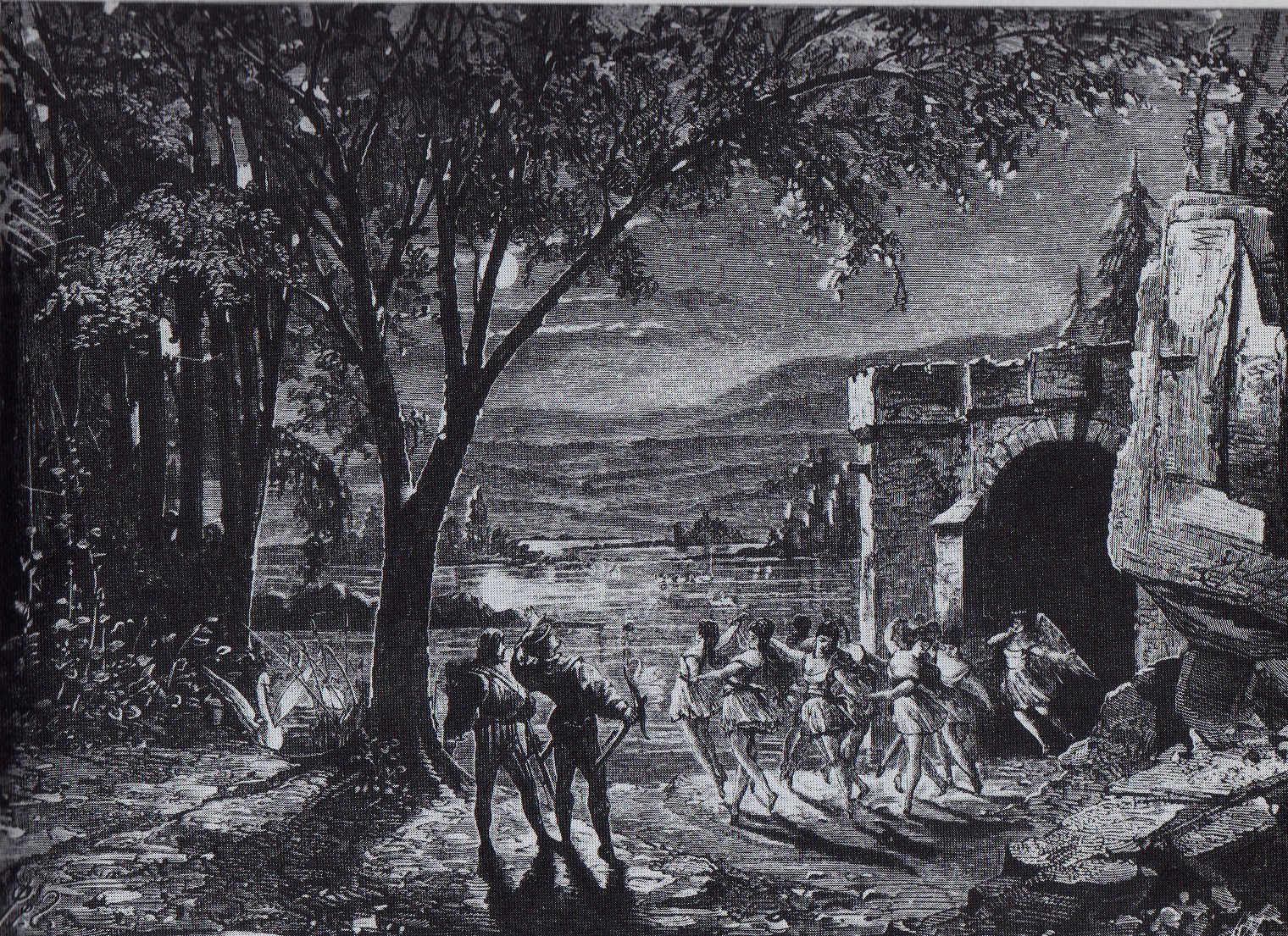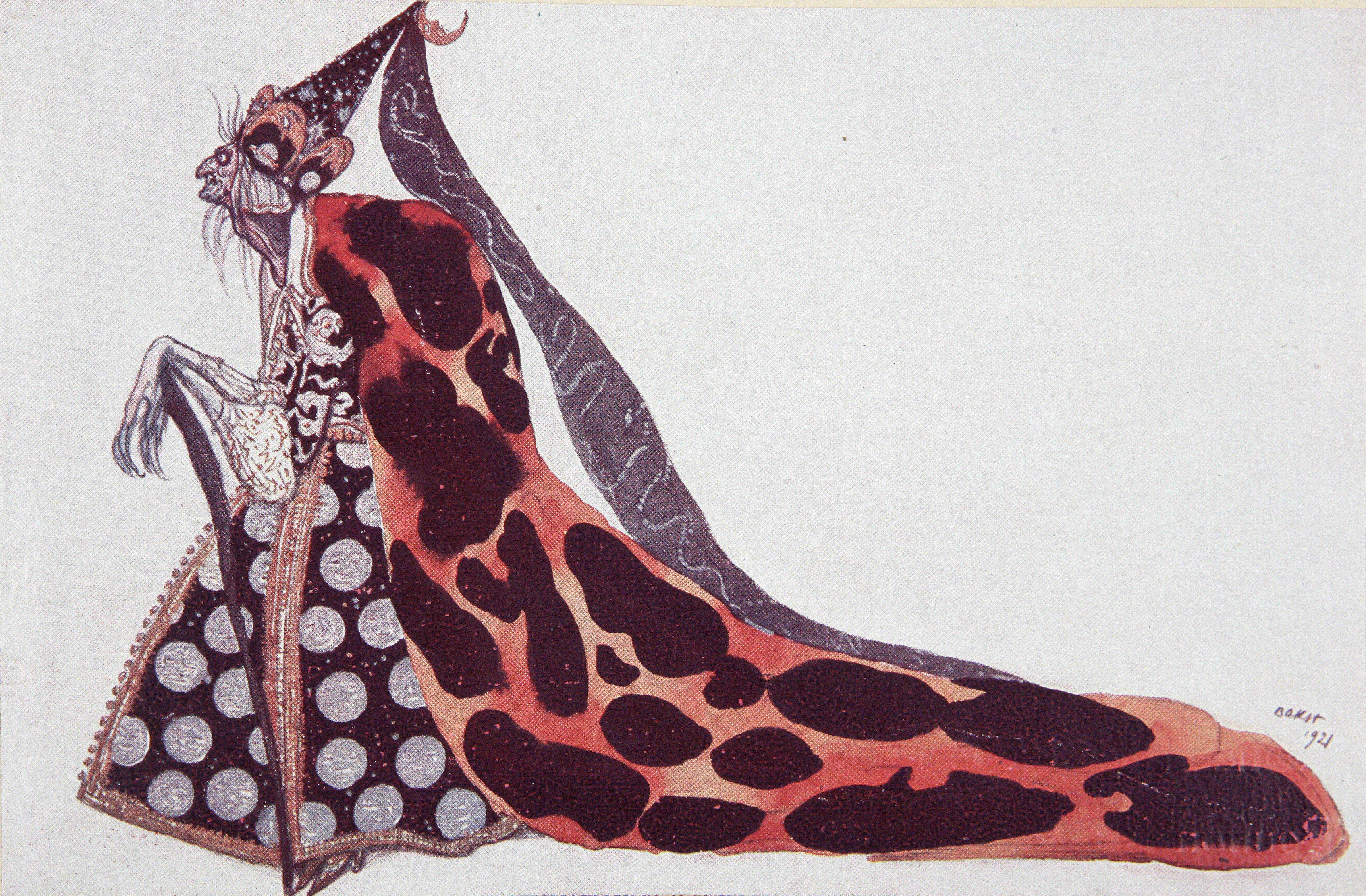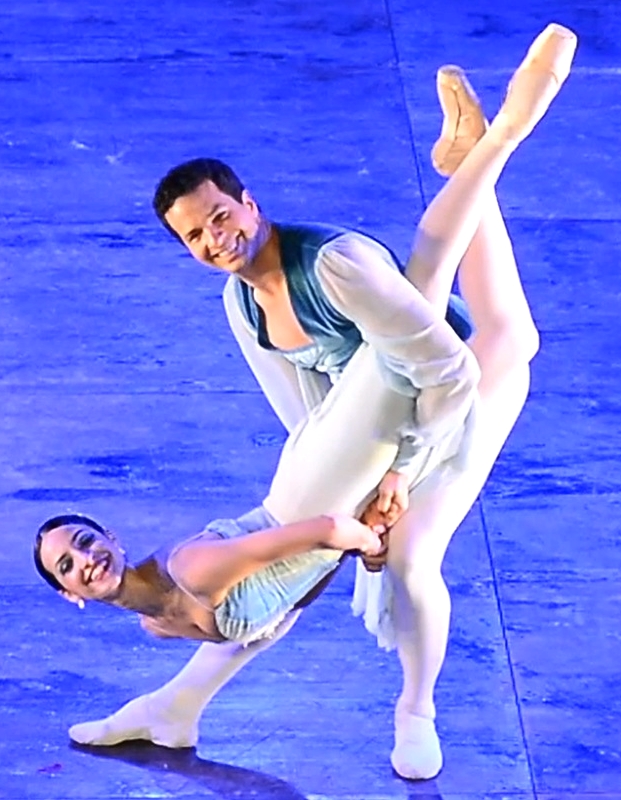|
Megan Fairchild
Megan Fairchild (born October 23, 1984) is an American ballet dancer. She is currently a principal dancer with the New York City Ballet. Early life Fairchild was born in Salt Lake City, Utah, and began her dance training at the age of four, studying with Judy Levitre and Kaelynne Oliphant at Dance Concepts in Sandy, Utah, and at the Ballet West Conservatory in Salt Lake City with Sharee Lane, Deborah Dobson, and Maureen Laird. While at the Ballet West Conservatory, Ms. Fairchild was also a Ballet West trainee. Ms. Fairchild entered the School of American Ballet (SAB), the official school of New York City Ballet, in the fall of 2000. Her brother, Robert Fairchild was also a principal with the company. She and her brother are both recipients of the Mae L. Wien Award at the School of American Ballet. Career In November 2001, Fairchild joined the New York City Ballet as an apprentice, and in October 2002 she joined the Company became a member of the corps de ballet. Fairchild was ... [...More Info...] [...Related Items...] OR: [Wikipedia] [Google] [Baidu] |
Salt Lake City, Utah
Salt Lake City (often shortened to Salt Lake and abbreviated as SLC) is the Capital (political), capital and List of cities and towns in Utah, most populous city of Utah, United States. It is the county seat, seat of Salt Lake County, Utah, Salt Lake County, the most populous county in Utah. With a population of 200,133 in 2020, the city is the core of the Salt Lake City metropolitan area, which had a population of 1,257,936 at the 2020 census. Salt Lake City is further situated within a larger metropolis known as the Salt Lake City–Provo–Orem Combined Statistical Area, Salt Lake City–Ogden–Provo Combined Statistical Area, a corridor of contiguous urban and suburban development stretched along a segment of the Wasatch Front, comprising a population of 2,746,164 (as of 2021 estimates), making it the 22nd largest in the nation. It is also the central core of the larger of only two major urban areas located within the Great Basin (the other being Reno, Nevada). Salt Lake C ... [...More Info...] [...Related Items...] OR: [Wikipedia] [Google] [Baidu] |
Jewels (ballet)
''Jewels'' is a three-act ballet created for the New York City Ballet by co-founder and founding choreographer George Balanchine. It premièred on Thursday, 13 April 1967 at the David H. Koch Theater, New York State Theater, with sets designed by Peter Harvey and lighting by Ronald Bates. ''Jewels'' has been called the first full-length abstract ballet. It has three related movements: ''Emeralds (ballet), Emeralds'', ''Rubies (ballet), Rubies'', and ''Diamonds (ballet), Diamonds'' (usually separated by intermissions). It can also be seen as three separate ballets, linked by their jewel-colored costumes. Balanchine commented: "The ballet had nothing to do with jewels. The dancers are just dressed like jewels." Each of the three acts features the music of a different composer: ''Emeralds'' is set to the music of Gabriel Fauré, ''Rubies'' to the music of Igor Stravinsky and ''Diamonds'' to music by Pyotr Ilyich Tchaikovsky. Costumes The costumes were created by Balanchine's long-tim ... [...More Info...] [...Related Items...] OR: [Wikipedia] [Google] [Baidu] |
Tiler Peck
Tiler Kalyn Peck (born January 12, 1989) is an American ballet dancer who is a principal dancer with the New York City Ballet. As well as ballet, she has performed in musical theatre shows and has made cameo appearances in films including ''Donnie Darko'' and television series including '' Tiny Pretty Things''. Early life Born in Bakersfield, California, Peck started her studies at her mother's ballet studio in Bakersfield, at the age of two. She started her formal training in classical ballet at the age of seven when she received private lessons in Hollywood from Alla Khaniashvili, a former dancer with the Bolshoi Ballet. Later, she began to study with New York City Ballet dancers Colleen and Patricia Neary in California. During this time she enrolled at the Westside School of Ballet in Santa Monica where she studied with the former New York City Ballet principal Yvonne Mousey and learned the Balanchine technique. Ballet career While performing on Broadway in Susan ... [...More Info...] [...Related Items...] OR: [Wikipedia] [Google] [Baidu] |
New York University
New York University (NYU) is a private research university in New York City. Chartered in 1831 by the New York State Legislature, NYU was founded by a group of New Yorkers led by then- Secretary of the Treasury Albert Gallatin. In 1832, the non-denominational all-male institution began its first classes near City Hall based on a curriculum focused on a secular education. The university moved in 1833 and has maintained its main campus in Greenwich Village surrounding Washington Square Park. Since then, the university has added an engineering school in Brooklyn's MetroTech Center and graduate schools throughout Manhattan. NYU has become the largest private university in the United States by enrollment, with a total of 51,848 enrolled students, including 26,733 undergraduate students and 25,115 graduate students, in 2019. NYU also receives the most applications of any private institution in the United States and admission is considered highly selective. NYU is organiz ... [...More Info...] [...Related Items...] OR: [Wikipedia] [Google] [Baidu] |
Fordham University
Fordham University () is a Private university, private Jesuit universities, Jesuit research university in New York City. Established in 1841 and named after the Fordham, Bronx, Fordham neighborhood of the The Bronx, Bronx in which its original campus is located, Fordham is the oldest Catholic Church, Catholic and Society of Jesus, Jesuit university in the northeastern United States and the third-oldest university in New York (state), New York State. Founded as St. John's College by John Hughes (archbishop), John Hughes, then a coadjutor bishop of New York, the college was placed in the care of the Society of Jesus shortly thereafter, and has since become a Association of Jesuit Colleges and Universities, Jesuit-affiliated independent school under a laity, lay board of trustees. The college's first president, John McCloskey, was later the first Catholic Cardinal (Catholic Church), cardinal in the United States. While governed independently of the church since 1969, every List o ... [...More Info...] [...Related Items...] OR: [Wikipedia] [Google] [Baidu] |
Dances At A Gathering
''Dances at a Gathering'' is a ballet choreographed by Jerome Robbins to music by Frédéric Chopin, with costumes designed by Joe Eula. The ballet premiered on May 22, 1969, at the New York State Theater, performed by the New York City Ballet. Production ''Dances at a Gathering'' is the first ballet Robbins created for the New York City Ballet (NYCB) in years, after he worked on Broadway theatre. He first planned to make a pas de deux for Patricia McBride and Edward Villella, but it was eventually expanded to five couples. According to NYCB, after George Balanchine saw 25 minutes of the ballet, he said: " ke more, make it like popcorn", so Robbins enlarged the ballet to an hour long. With costumes by Joe Eula and lighting by Thomas Skelton, the ballet had a gala preview on May 8, 1969, before premiering on May 22. Robbins dedicated the ballet to lighting designer Jean Rosenthal, who had died on May 1. Following the premiere, there were many speculations regarding the n ... [...More Info...] [...Related Items...] OR: [Wikipedia] [Google] [Baidu] |
Swan Lake
''Swan Lake'' ( rus, Лебеди́ное о́зеро, r=Lebedínoye ózero, p=lʲɪbʲɪˈdʲinəjə ˈozʲɪrə, link=no ), Op. 20, is a ballet composed by Russian composer Pyotr Ilyich Tchaikovsky in 1875–76. Despite its initial failure, it is now one of the most popular ballets of all time. The scenario, initially in two acts, was fashioned from Russian and German folk tales and tells the story of Odette, a princess turned into a swan by an evil sorcerer's curse. The choreographer of the original production was Julius Reisinger (Václav Reisinger). The ballet was premiered by the Bolshoi Ballet on at the Bolshoi Theatre in Moscow. Although it is presented in many different versions, most ballet companies base their stagings both choreographically and musically on the 1895 revival of Marius Petipa and Lev Ivanov, first staged for the Imperial Ballet on 15 January 1895, at the Mariinsky Theatre in St. Petersburg. For this revival, Tchaikovsky's score was revise ... [...More Info...] [...Related Items...] OR: [Wikipedia] [Google] [Baidu] |
The Sleeping Beauty (ballet)
''The Sleeping Beauty'' ( rus, Спящая красавица, Spyashchaya krasavitsa ) is a ballet in a prologue and three acts, first performed in 1890. The music was composed by Pyotr Ilyich Tchaikovsky ( Opus 66). The score was completed in 1889, and is the second of his three ballets. The original scenario was conceived by Ivan Vsevolozhsky, and is based on Charles Perrault's ''La Belle au bois dormant''. The choreographer of the original production was Marius Petipa. The premiere performance took place at the Mariinsky Theatre in St. Petersburg on January 15, 1890. The work has become one of the classical repertoire's most famous ballets. History Tchaikovsky was approached by the Director of the Imperial Theatres in St. Petersburg, Ivan Vsevolozhsky on 25 May 1888 about a possible ballet adaptation on the subject of the story of '' Undine''. It was later decided that Charles Perrault's ''La Belle au bois dormant'' would be the story for which Tchaikovsky wou ... [...More Info...] [...Related Items...] OR: [Wikipedia] [Google] [Baidu] |
La Sylphide
''La Sylphide'' ( en, The Sylph; da, Sylfiden) is a romantic ballet in two acts. There were two versions of the ballet; the original choreographed by Filippo Taglioni in 1832, and a second version choreographed by August Bournonville in 1836. Bournonville's is the only version known to have survived and is one of the world's oldest surviving ballets. Taglioni version On 12 March 1832 the first version of ''La Sylphide'' premiered at the Salle Le Peletier of the Paris Opéra with choreography by the groundbreaking Italian choreographer Filippo Taglioni and music by Jean-Madeleine Schneitzhoeffer. Taglioni designed the work as a showcase for his daughter Marie. ''La Sylphide'' was the first ballet where dancing '' en pointe'' had an aesthetic rationale and was not merely an acrobatic stunt, often involving ungraceful arm movements and exertions, as had been the approach of dancers in the late 1820s. Marie was known for shortening her skirts in the performance of ''La Sylp ... [...More Info...] [...Related Items...] OR: [Wikipedia] [Google] [Baidu] |
Theme And Variations
In music, variation is a formal technique where material is repeated in an altered form. The changes may involve melody, rhythm, harmony, counterpoint, timbre, orchestration or any combination of these. Variation techniques Mozart's Twelve Variations on "Ah vous dirai-je, Maman" (1785), known in the English-speaking world as " Twinkle, Twinkle, Little Star" exemplifies a number of common variation techniques. Here are the first eight bars of the theme: Melodic variation Mozart's first variation decorates and elaborates the plain melodic line: Rhythmic variation The fifth variation breaks up the steady pulse and creates syncopated off-beats: Harmonic variation The seventh variation introduces powerful new chords, which replace the simple harmonies originally implied by the theme with a prolongational series of descending fifths: Minor mode In the elaborate eighth variation, Mozart changes from the major to the parallel minor mode, while combining three techniques: count ... [...More Info...] [...Related Items...] OR: [Wikipedia] [Google] [Baidu] |
Tschaikovsky Pas De Deux
''Tchaikovsky Pas de Deux'' is a ballet choreographed by George Balanchine to a composition by Pyotr Ilyich Tchaikovsky originally intended for act 3 of ''Swan Lake'' (Op. 20, 1875–76). With costumes by Barbara Karinska and lighting by Jack Owen Brown, it was first presented by New York City Ballet at the City Center of Music and Drama, New York, on 29 March 1960. Robert Irving conducted the New York City Ballet Orchestra. The dancers were Violette Verdy and Conrad Ludlow. Background In 1877, Anna Sobeshchanskaya, ''prima ballerina'' of the Bolshoi Theater in Moscow, made her debut in the dual role of Odette/Odile in ''Swan Lake''. After three performances, she was so dissatisfied with the choreography of Julius Reisinger that she asked for new material for the role of Odile in act 3. With permission from the producers, she traveled from Moscow to Saint Petersburg to ask Marius Petipa, ballet master of the Imperial Theaters, to set a ''pas de deux'' for Odile and Siegfried to re ... [...More Info...] [...Related Items...] OR: [Wikipedia] [Google] [Baidu] |
Symphony In C (ballet)
''Symphony in C'', originally titled ''Le Palais de Cristal'', is a ballet choreographed by George Balanchine, to Georges Bizet's Symphony in C. The ballet was originally created for the Paris Opera Ballet, and premiered on July 28, 1947 at Théâtre National de l'Opéra. Production Georges Bizet (1838 – 1875) wrote Symphony in C when he was 17-year-old student, and the score was not found until 1933. Composer Igor Stravinsky informed choreographer George Balanchine about this discovery. In 1947, as a guest ballet master at the Paris Opera Ballet, Balanchine choreographed the ballet, then titled ''Le Palais de Cristal'', to "showcase for the talent of the whole company." Balanchine paid homage to Léo Staats, a French choreographer he admired. According to NYCB, Balanchine created the ballet within two weeks. The following year, he restaged the ballet for Ballet Society, under the title ''Symphony in C'', and this version was featured in New York City Ballet's first progra ... [...More Info...] [...Related Items...] OR: [Wikipedia] [Google] [Baidu] |

.jpg)




